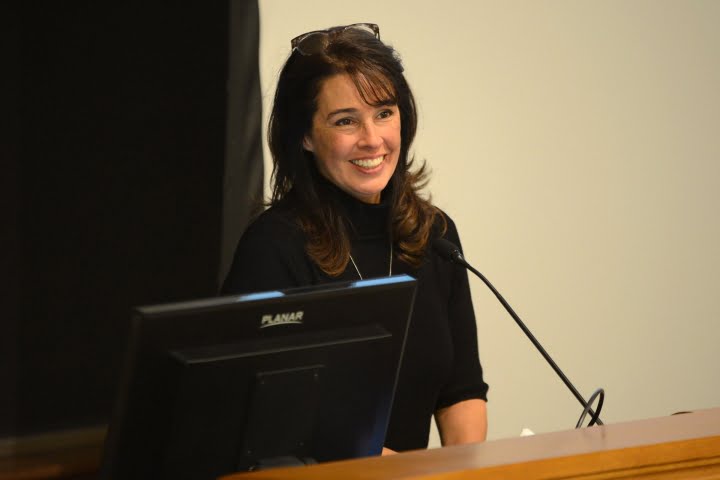
Amber Arellano, the founding executive director of The Education Trust-Midwest, talked about the challenges facing Michigan K-12 public education in a lecture Wednesday afternoon at the Ford School of Public Policy.
According to The New York Times, compared to the rest of the United States, the state of Michigan has some of the lowest recorded performance and growth among students in the K-12 public education system. Because of that, Arellano said drastic changes by state leaders in spending and coordination must be taken to improve the performance of students.
According to Arellano and research by The Education Trust-Midwest, while the national measure of students’ performance in the K-12 system has improved, with statistics showing an increase in the graduation rate and significant gains in performance by students of color, students in Michigan have been doing worse every year.
For example, Michigan was one of only six states in the country in 2003 in which fourth grade students are learning at a lower level than in 2002, according to scores from the National Assessment of Educational Progress, which is a national test of student learning.
“Michigan only 15 years ago had been about an average or even a little better than average state,” Arellano said. “We’ve made considerable decline in just 10 to 15 years.”
Arellano said a large reason for the decline was in part due to low performance from students in the Detroit Public School system. Both white students and students of color showed low performance in DPS.
Charter schools, which promised to bring better educational options when they opened, especially for students of color and low-income students, are actually producing very low performance and growth from students, according to The New York Times. Research from Stanford University indicated 50 percent of charter schools in Michigan were performing equal to or worse than Detroit Public schools, Arellano said.
Arellanso said often with such low performance rates by students in public and charter schools, there is a question of why this topic hasn’t been recognized more by the people of Michigan. She added that this was due to people believing that irregular aspects of the public education system were normal.
“We think it’s normal for us to continue to backslide or remain stagnant in our student growth,” Arellano said. “We’re the only smarter balanced state in the country that saw a decline or stagnation in almost all of our metrics. We need to help Michiganders understand that this is not normal.”
She also noted that minority students or students who underperformed were assigned disproportionately to the least experienced, least educated and least effective teachers, in schools with less challenging curricula.
As for what path Michigan should take to remedy this issue, Arellano pointed to initiatives taken by other states that had high-performing students in public schools. Florida, for example, which had some of the highest student gains in reading, has a universal pre-kindergarten program and enforced a system for underperforming students in which they would be held back and assigned to the most effective teachers.
Massachusetts, another extremely high-performing and high-growth state, enacted policies that provided both students and teachers with resources to match assessment standards.
“Implementing new standards in an aligned assessment along with both serious capacity building and investments and supports for teachers to meet those new standards and accountability in their performance, those were some of the first plays in the Massachusetts playbook in their grand bargain that took place in the early ‘90s,” Arellano said.
Tennessee also set high standards and increased accountability from its teaching staff, according to Arellano. In return, the state has seen greater and more equitable funding for schools and more learning growth from students.
“In the data from the last couple NEAP releases, they’re not only seeing those gains for white students in Tennessee and they’re not seeing them just for suburban students, they’re also seeing them for African-American students and students from rural hamlets,” Arellano said.
[Source:-The Michigan Daily]






